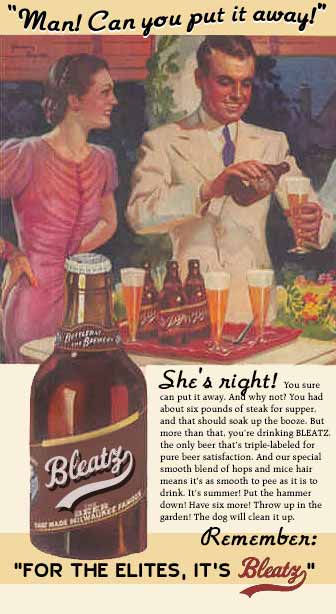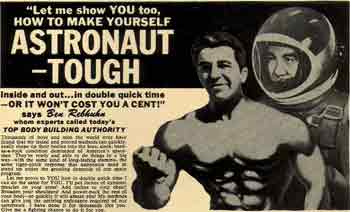 |
|
 So I write a big long column about the International Red Cross demanding that Saddam be charged or released by June 30. It’s in the form of Saddam’s Diary. (“Did I pay them off? There were so many palms out in those days; it’s hard to know. But I don’t think so. For some reason I believed there wasn’t any point. Ha! Note to self: The IRC works for free.”) Then I go on the web to prowl the blogs and other news sites, and behold: the story has been retracted. Well. Crap. Rip it up, start again. I’m taking a break from the new column – banged out 800 words, which I’ve put on the sill to cool for a while. Now I’m doing this, while Gnat runs around and screams along with “Yellow Bus” by Justin Roberts, a children’s CD she listens to at least twice a day. I know it by heart as well. I like it. In fact I like it a lot; clever and fast without any condescension or saccharine Barneyisms. So I write a big long column about the International Red Cross demanding that Saddam be charged or released by June 30. It’s in the form of Saddam’s Diary. (“Did I pay them off? There were so many palms out in those days; it’s hard to know. But I don’t think so. For some reason I believed there wasn’t any point. Ha! Note to self: The IRC works for free.”) Then I go on the web to prowl the blogs and other news sites, and behold: the story has been retracted. Well. Crap. Rip it up, start again. I’m taking a break from the new column – banged out 800 words, which I’ve put on the sill to cool for a while. Now I’m doing this, while Gnat runs around and screams along with “Yellow Bus” by Justin Roberts, a children’s CD she listens to at least twice a day. I know it by heart as well. I like it. In fact I like it a lot; clever and fast without any condescension or saccharine Barneyisms.
It’s too noisy to think, let alone write. What’s the line: the pram in the hall is the enemy of art. Actually, it’s the pram being pushed down the stairs while the dog barks and the music plays and the phone rings. Let’s try this later.
Later.
Watched some interesting movies this weekend, he said, fully aware of how boring that sounds, and how cheap and easy movie-reviews really are. I mean, who cares what I saw? Well, I generally don’t talk about recent movies unless they made a strong impression. “One Hour Photo,” for example: okay, fine, next. I don’t mind Robin Williams if he’s doing one of the Creepy Roles, because when he’s playing Creepy his chin and his nose appear to be coming together like segments of a rotting pumpkin. The movie is worth it for the art direction. It’s so clean. You can hold up a wound to the screen and it’s disinfected. But I really want to talk about “Portrait of Jennie,” a peculiar film about an artist (Joseph Cotton) who falls in love with a small child from the past, and waits several months while she ages to the point where he can probably have sex with her, if it weren’t for the Hays Code. It features a nice performance from one of the nation’s 12,945 Barrymores, a slightly haunting score, an elfin performance from David Wayne (who to me will always be the small, bespectacked scientist soiling his drawers in “The Andromeda Strain” when he gets exposed to the bug in a locked-down room) and very odd special effects at the end. Most of the film is black and white. At the end it turns green. Then it turns red. The very last image is TECHNOCOLOR, as we finally gaze upon the Portrait of Jennie. Which turns out to be about as haunting as a Warhol silkscreen of a soup can. All in all, one of those terribly solemn important 40s movie about artists. You know, artists. The ones who walked around Washington Square in the winter with their collars up, clutching a portfolio, faint from hunger (last meal was at the Automat three days ago, when he had some soup made from free ketchup and the water squeezed from cast-off tea bags) all so he can pursue his dream of being a painter. There’s a problem with these characters – if they’re abstract painters, the audience loses sympathy. If they’re really good painters, you wonder why they’re starving – can’t they go into advertising, or something? You get the picture of a city teeming with thousands of fine painters who cannot get jobs, and are reduced to painting the walls of pubs for bread and a Rheingold.
I mention the movie only for one reason: it has the most magnificent dream-like shots of Central Park I’ve ever seen. Stunning shots of the towers in sunlight and fog. Imagine how that struck someone watching in a small theater in a little town in Iowa, where only the grain elevator was taller than two stories; New York must have seemed like an impossible place built and populated by a race of god-like creatures.
Elsewhere in the world of art I was reading about the latest, and last, Tintin book. I have to get it. My love of comics began with Tintin; the first comic book I had was “Destination: Moon,” and that’s like saying the first exposure to classical music was Beethoven’s Ninth. (Which, come to think of it, usually is one’s first exposure to classical music.)
I just got out my battered hardcover version to get some Tintin images, but I was sidetracked by something pressed between the pages: “The Blue Beetle,” a Charlton comic from 1968, drawn by Steve Ditko, the fabled co-creator of Spider-Man and great Marvel illustrator of Dr. Strange and dozens of post-code horror stories. As we all know, he went nuts. Well, not nuts. But some thought so. He has rather uncompromising beliefs that make Ayn Rand look like Thomas Friedman. His politics swamped his art, and to me the latter work is unreadable. But the early stuff is brilliant. In this issue of the Blue Beetle, you can see where Ditko’s headed: there are two stories with two different crime fighters, and both share a common foe: Boris Ebar, an art dealer whose biggest sin appears to be an aesthetic delight in nihilism.
Mighty Google indicates that there does not exist on the web the cover of Blue Beetle #5.
Allow me to help.
The ads in the comic are priceless, much more interesting than the comic itself. This one hails from a different America:

He's not just tough. He's Astronaut tough. I guess that means a 9:1 shoulders-to-hip ratio. Why? You couldn't get in the capsule.
That’s all you get today; the comic almost flakes apart in my hands. Back it goes in the Closet Museum. Which reminds me: Stagworld starts in earnest tomorrow. Men’s mags from the 40s and 50s. It’s creepy and it’s kooky and altogether ookie. Believe me. See you then.
|
|
|
|
|